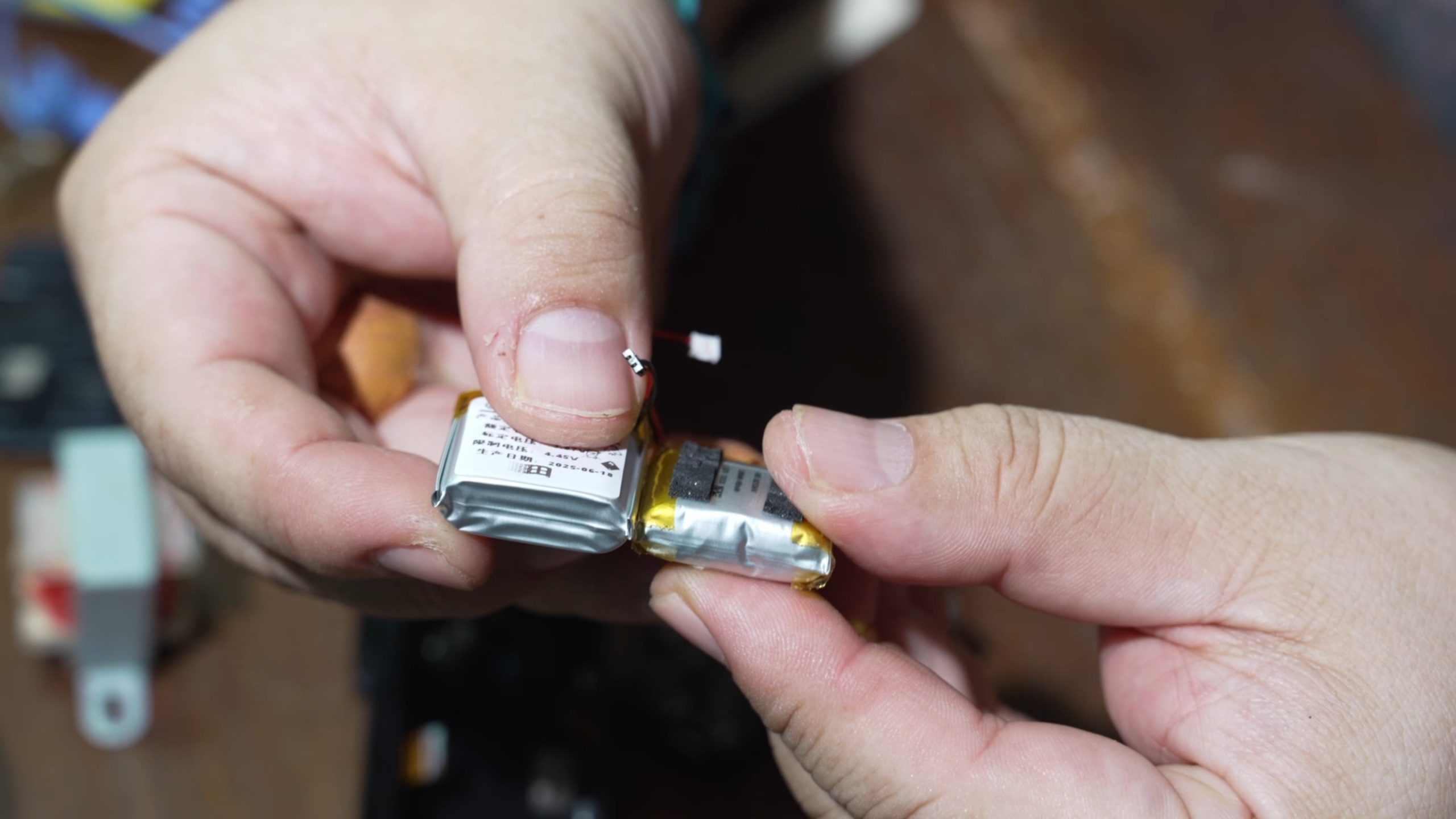Youtube video LINK https://www.youtube.com/watch?v=2rhgj95Te88
Right… we are going to talk about the Hollyland Lark Max by Hollyland Tech or as it is known in China, Moma Lark Max which translates into something like Ferocious Mammoth Lark Max.
TL;DR
I had issues with my Lark Max at around the 1.52yr mark where both transmitter batteries and the receiver battery are bloated; and needed replacement.
I wondered why all 3 failed more or less nearly at the same time and in short, IMHO it is due to low-quality batteries or poor design/implementation or both.
Back Story / History
A couple of months after the lockdowns were completely lifted, I bought a Zoom H1n to start exploring hybrid shooting for weddings and events. When I bought the H1n, I got it because it was cheap and flexible.
Eventually, I grew out of it and decided it was time to invest in something that is way more portable and possibly even more flexible, the Hollyland Lark Max.
I bought it nearly as soon as it was launched in Malaysia, paid a pretty penny for it (I think RM1.2k?) after only reading some reviews and I again chose it because it was great value for money compared to the DJI Mic and Rode Wireless Go.
In addition to that, having 2 transmitters meant I could use 1 TX to record from the sound mixer / sound board or failing that, just the environmental sound and another TX to record either the main person on stage.
Being more compact, I could also start to seriously dabble in commercial video work, interviews and such.
Fast forward to September 2025, I took my original Lark Max out for a short assignment. I knew the batteries had started to degrade a little but on an earlier assignment, everything still lasted more than 2hrs+ so it was still ok.
When Disaster Struck
On a short assignment, I mic-ed up the emcee around 45mins before the event started with a lavalier with TX1, they event should only be around an hour or so and worse come to worst, I still had TX2, right? Wrong
TX2 was set to record the crowd response.
A short while after the event started, I was suddenly aware there was only 1 mic left working when I checked on the RX… alarmed, I moved one of my cameras close to the speakers to make sure I got at least some decently sound recorded and proceeded to wait for the emcee to finish her opening; then swapped TX1 which is dead with TX2.
TX2 at that time still had battery and it showed at least 75% battery left on the RX battery level display.
Emcee went back on stage, I wiped off the sweat off my brow and forehead. I proceeded to pick up my gimballed camera and continued shooting.
Being more alert this time, 5mins after that, I saw that TX2 battery died as well….
Shortly thereafter, the RX battery died too.
I ended the event with some usable audio and fortunately, the video was still good enough to be delivered.
In summary, TX1 battery died just when the event started (it lasted around 45mins from 100% battery level), TX2 battery lasted nearly twice. Even the RX died around 3hrs after it was removed from the charging case.
Batteries Die, right?
Yes, batteries do die, especially Li-Ion cells. Now, the main issue is this, the Hollyland Lark Max battery life is stated as such :
- TX battery life of 7hrs or more
- RX battery life of 10hrs or more
- Battery charging case enables charging of all 3 (2x TX and 1x RX) at least 1.5 times
7hrs is 420mins; and 10hrs is 600mins.
This means the battery life on my Lark Max TX was less than and around 10%-25% of maximum state capacity and RX was ~33% of original capacity.
I would suggest it is simply not acceptable nor within expected specifications for Li-Ion batteries to degrade up to 80-90% after 2yrs of occasional use. I think I can probably count about 20-30 times where I used them; that means the charging cycle for all 3 items should be a maximum of 30 times.
I asked Gemini how much battery capacity should degrade after 50 cycles with typical Li-Ion batteries, and here’s what it said :
For your reference, this is what Gemini said when I asked it how much should normal Li-Ion battery cycles degrade after 50 cycles :
The capacity degradation of a typical Li-ion battery after 50 charging and discharging cycles is generally very low under normal operating conditions (moderate temperature and charging/discharging rates).
There is no single fixed percentage because degradation is heavily influenced by several factors:
- Temperature: High heat significantly accelerates degradation.
- Depth of Discharge (DoD): Batteries cycled with shallower discharges (e.g., 80% to 20% State of Charge (SoC)) degrade slower than those subjected to deep discharges (e.g., 100% to 0% SoC).
- Charge/Discharge Rates (C-rates): Very fast charging and discharging can increase stress and degradation.
- Cell Chemistry and Quality: Different Li-ion chemistries and manufacturing quality show varying cycle life characteristics.
Estimated Capacity Loss after 50 Cycles
Based on typical cycle life data, you can estimate a minimal loss for the first 50 cycles:
- Many commercial Li-ion batteries are rated to retain 80% of their initial capacity after 300 to 500 full cycles (100% DoD) under standard conditions.
- This translates to an average capacity loss per full cycle of approximately 0.04% to 0.067% (e.g., 20% loss over 300 cycles). Using this average, a theoretical loss after 50 full cycles would be in the range of 2% to 3.5%.
In reality, the actual capacity loss for the first 50 cycles under good conditions is often on the lower end, possibly less than 2%, as the degradation curve is not perfectly linear and can be slower early in the battery’s life.
Key Degradation Factors
Capacity fade is a result of irreversible chemical changes inside the battery cell, including:
- Solid Electrolyte Interphase (SEI) Growth: A layer on the anode that grows over time, consuming active lithium ions and reducing capacity.
- Loss of Active Material: Breakdown of the electrode materials themselves.
- Lithium Plating: Lithium metal forms on the anode surface, especially at high charging rates or low temperatures, reducing the available lithium.For optimal longevity, avoiding high temperatures and constant full (100%) charge/deep (0%) discharge cycles is recommended. Shallow cycling prolongs the lifespan significantly
In short, Gemini said, at 50 cycles, the degradation should be nearly undetectable or maybe can be considered negligible.
Do note that the transmitters and receiver were inside the charging case all the time when I was not using them. The entire charging case was kept in a dry cabinet with my camera equipment which has an average temperature of 30deg Celsius.
So, NO, these batteries SHOULD NOT have died the way they did and definitely not at nearly the same time.
My Hypothesis
Right, so what caused this curious behavior?
- We know that after 50 cycles, there should barely be more than 5% degradation, maybe 10%; the cells definitely shouldn’t be bloated
- No environmental conditions caused the degradation
Either the cells were really low quality or somehow the batteries were subject to more than 50 cycles of charging/discharge or both.
I hypothesize that the Hollyland Lark Max has relatively high self-discharge or more accurately, significant power draw when kept in the charging case.
This would result in the batteries starting to drain to a level where charging was triggered in the charging case. And it would happen even when the TX & RX are in storage.
Eventually, all this discharging – charging would degrade the batteries and eventually cause bloating. Bloating could eventually lead to actual destruction of the cells.
Why do I think the charging didn’t stop? About a year or so ago, I started noticing whenever I opened the charging case despite having not used the unit for like maybe a week. 1 or 2 or all 3 of the charging led indicators inside the charging case would be blinking.
Blinking actually indicates charging, once charging is completed, the indicator lights should be lit continuously.
I didn’t think much of it and instead thought, maybe its just because when I took the case out of the dry cabinet, I jostled the TX / RX a little and made them resume charging.
Now that I think of it, I was deadly wrong.
Communications with Hollyland
So what did I do after discovering all that? I go to standard channels, i.e. I asked to get them repaired by their local distributor.
Another issue then reared its head, Hollyland tech has a policy of NOT repairing their wireless lavs even if you were to pay them; they only sell replacement units.
And I was told by the local distributor that these replacement transmitters & receivers are very expensive and it would just be better if I buy the entire retail set.
Furious, I then proceeded to send Hollyland Tech themselves an email and told them about the issue plus the fact that I am going to make a video regarding this. I also told them, whatever they do I will still produce the video so that others can benefit from my experience.
Hollyland offered to replace both my TX for a “significant discount” but I had to source the RX battery myself and DIYéd the repair myself. It wasn’t very difficult.
My Conclusions
- Hollyland wouldn’t normally repair their wireless lavs.
- Replacements would cost more than buying new and buying a 2yr product new when its replacement is out doesn’t make sense
- So, in 2yrs, the Hollyland Lark Max that I paid RM1.4k for became e-waste. Period.
From what I have seen with the Hollyland / Moma Lark Max, it is either a poorly designed product or equipped with subpar batteries or both.
As such, I have decided to steer clear of Hollyland products for the time being. They aren’t the only company making wireless lavs, video transmitters nor monitors. I have lost confidence in their products and this is without even talking about the after sales service.
That is not the kind of product I would buy again and certainly not the kind of corporate attitude that I would like to support with my wallet.
Of course, I am not saying products from DJI, Saramonic, Rode or any other myriad of wireless lav makers are better. I would be very wary now with buying anything that I would use professionally with built-in batteries.
My Preventive Measures
Going forward, here is what I am doing now :
- I DO NOT use the charging case unless I have to charge the TX / RX during a shoot
- I keep the TX & RX both switched off and outside the charging case when I am not using them
- DO NOT charge the TX & RX to max after an assignment, charge them immediately before or a day before the next assignment
- When charging them before usage/assignments, use the USB-C connector instead as the pogo pins / pads don’t feel well designed
- Keep everything inside a dry cabinet
Hopefully, this would prolong the battery life for my Lark Max so that they at least work when I need them to work. And also hope this helps you who is reading this get more life / reliability out of your wireless lavs even if they aren’t the same model.
Also… I have now dusted off my old H1n; loaded up with triple-A batteries and carry all that to all my assignments as I can no longer trust the Lark Max even if it has 2 TX / recorders.
Youtube video LINK https://www.youtube.com/watch?v=2rhgj95Te88


Leave a Reply